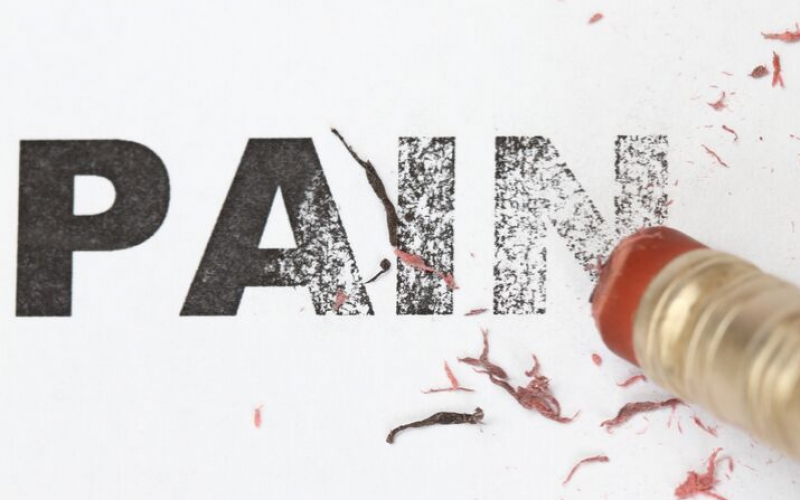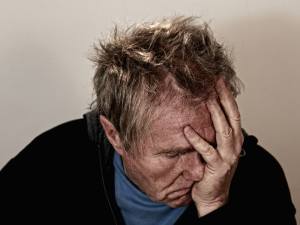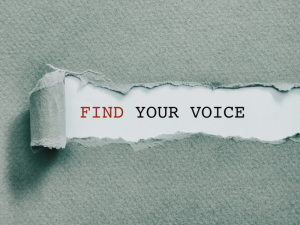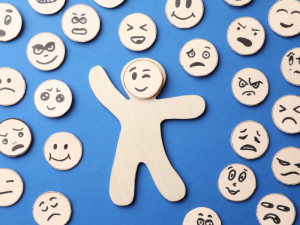The previous post, “pain what’s really going on?” looked at pain from a medical and scientific point of view to understand how pain can be categorised, the variety of words to describe pain, and the regular healing times, which may help people avoid slipping into persistent or chronic states. This post will look at current best practices in treating ongoing pain and includes video links at the end.
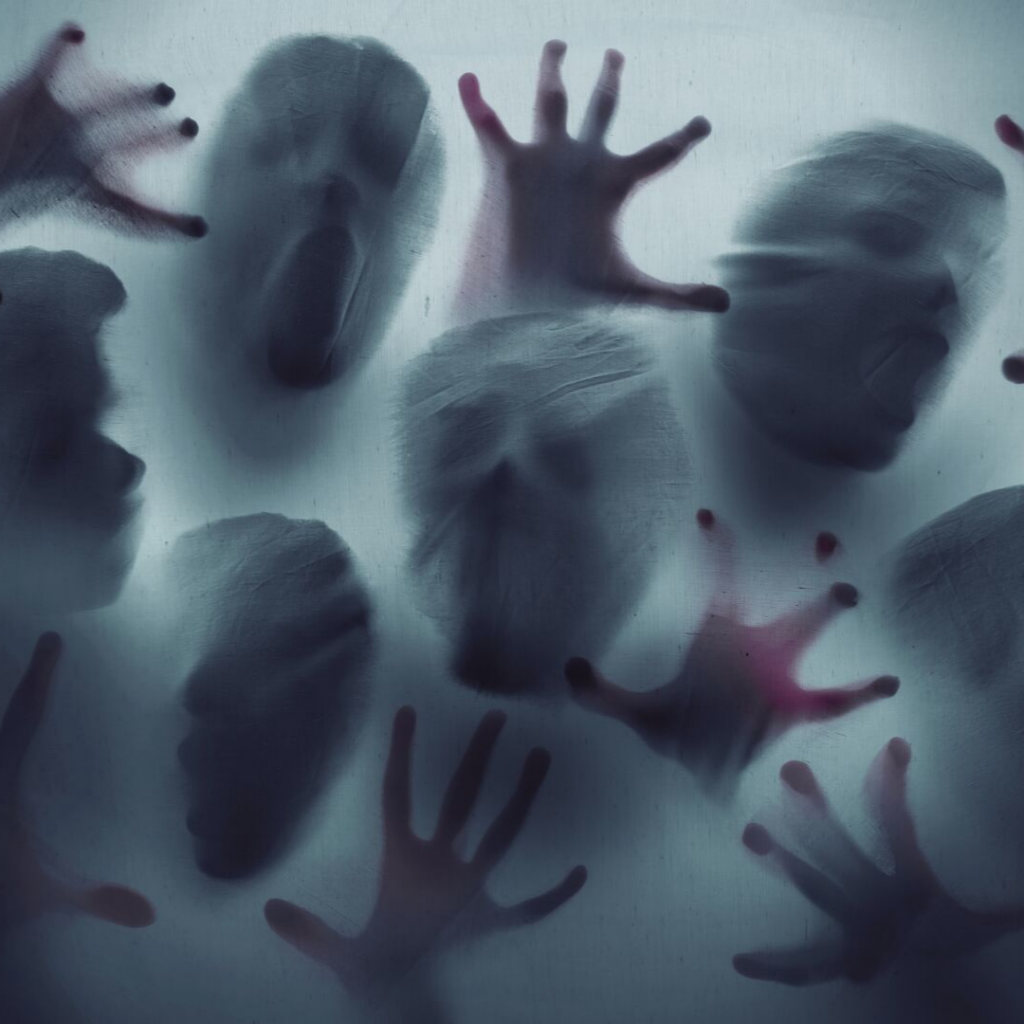
Ways forward in pain management?
Over the last 15 years, many new and emerging approaches to treating pain are reaching a wider audience. Research shows that education is crucial to help people understand why we feel pain and how the brain reacts to pain. It should be fundamental to all patient-centred approaches and easy to understand because it is critical and can be transformational to recovery.
Unfortunately, these new management strategies and treatment options don’t seem readily accessible to all in the UK. If possible, most people will have slipped into a persistent or chronic pain state before these options are suggested. This means inadequate and outdated advice and treatment are still being given, putting people at risk of chronicity and a Yo-Yo cycle of suffering.
Side note: this is the only time I will use the word ‘suffering’ on the same page as pain because, in my opinion, it is not helpful or empowering. While I acknowledge its association, and for some people, it’s essential because I hear it daily, there is more beneficial language to use.
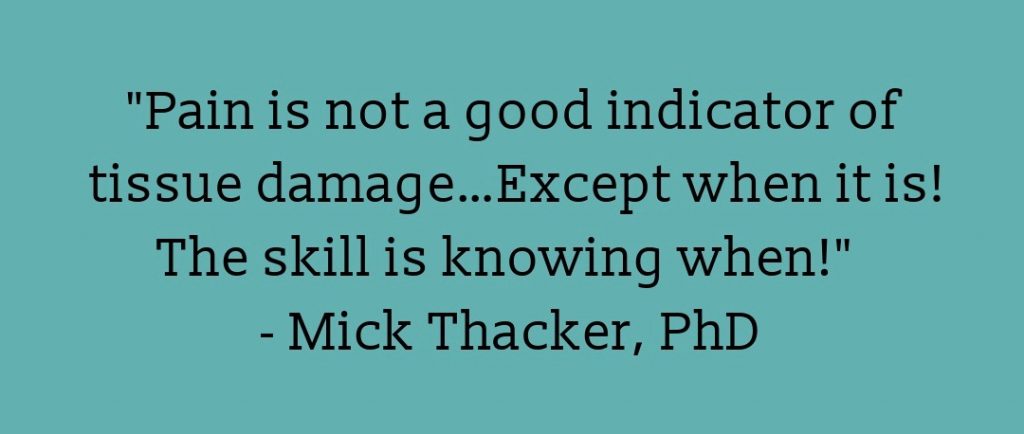
The language used to describe physical pain is essential for understanding another person’s discomfort or hurt. Pain is a subjective experience that is challenging to convey to others, especially if there are no obvious outward clues, such as crutches. As someone who has lived through several (too many) severe physical traumas, and the subsequent long periods of debilitating, often poorly managed pain and the associated emotional fallout.
The dark humour on a smiley face and my jokey references to being ‘broken’ often used to get through the challenging days, weeks and sometimes months did not, on reflection, aid my recovery. Or get me the help and support I needed. All this confirmed my belief that pain was my frenemy and that complete recovery was impossible. Nor did being put into the “broken healer tribe” by some well-meaning educators when I was well enough to retrain and change my career. Worse, though, I wore the broken healer badge with pride; it was hard-fought-for, seemed to define me, helped me find a new tribe, a place of belonging and was the catalyst for change. Why would I want to give that up?!
My experience of living with persistent pain was the foundation on which I base my current work! It gave me insight and resilience, and I believe in genuine compassion for others who live with pain. I have a no-nonsense; let’s keep trying pragmatic belief that things can change for the better; call it hope if you like. It [persistent pain] made me look for answers, spend seven years retraining, and now I have the enormous privilege of sharing the best of what I learnt with the people who cross my path in need of help.
Many years later, with more knowledge and an increased understanding of pain science, my mindset shifted, but it was a slow change, followed by a series of synchronicities.
I had never been comfortable with the word suffering, so I opted for ‘broken’, but perhaps it was worse. Over a few weeks, several people gently challenged my “broken self” belief, and I kept seeing Janine Shepherd’s quote, “A broken body isn’t a broken person.” It became the catalyst for a mindset, self-talk, language change, and a new deeper dive into education.
For those ready to step into the journey of improving their wellbeing with me, you won’t hear me use broken or suffering, and I might gently challenge you if I hear those words. It’s cliche, but recovery usually involves some navigating because it’s rarely a straight path. You’ll need serious negotiation (with oneself) and, like off-road adventures, perseverance and courage. I appreciate that I say this now from a place of awareness, knowledge, and self-reflection, and with tremendous resources. Yep, hindsight is wonderful and sometimes very annoying.

Did you know –
An over-sensitised nervous system can also cause symptoms in other body parts. It makes sense when you think about the number of people who experience abdominal pain or irritable bowel syndrome (IBS) symptoms when they feel stressed or get headaches when the pressure builds to meet a deadline.
Healing Pain, facts and tips
- While it’s important to acknowledge that pain is an actual sensation, try not to give it too much attention, as this can make discomfort feel more intense.
- The association between pain and damage is not helpful and invalid in almost all cases.
- Injured tissues will heal within six weeks to 6 months.
- Emotions may come up, so observe and acknowledge them, but you can choose not to give them too much meaning or space.
- Be engaged and active in your activities; it might be a cliché, but “motion is the lotion to health”.
- Create balance by noticing the parts of your body are at ease and feel comfortable and pain-free.
- Pain recovery education is a brilliant and meaningful way to build resilience and understand that recovery from chronic pain is possible.

Self-help strategies
There are lots of simple self-empowering strategies and tips which can help people recover from ongoing pain. Even if you have tried them all without success, it’s always worth another go. The recovery process requires some trial and error and dedication, too. I know from personal experience that some options that didn’t work the first time or I dismissed were more successful on another occasion–the right time, the proper support, and the right mindset.
Using a multi-factorial approach is often the most effective way forward. Studies and clinical experience show that people achieve the best results with a holistic mind-body approach. Set some goals with a health professional to help you gain back control. Eat well, move daily, and get enough rest. Work with a movement or physical therapist to develop your movement confidence. Get emotional or psychological support if needed. Don’t expect a quick fix cure-all result, but understand that full recovery is possible.
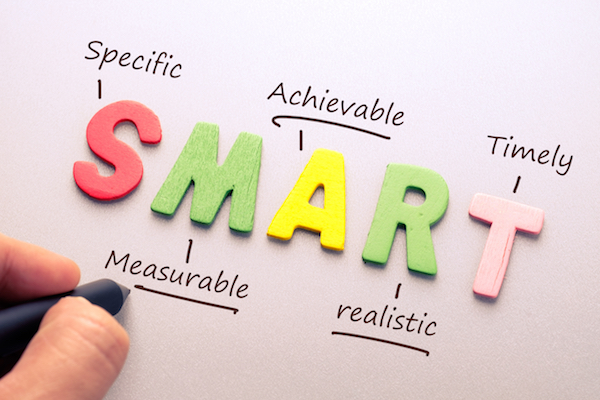
Goals should include the following considerations:
- Reprogramming the nervous system to dial down the pain signal and create more appropriate internal conditions
- A graded exercise programme or movement practice to restore confidence, balance, and strength to the whole bod
- Hands-on treatment can be helpful too. Releasing tight and contracted muscles can be beneficial in addressing underlying physical stress and help people who struggle to get comfortable or relax.
- Meditation, mindfulness and clinical hypnotherapy can be brilliant ways to manage underlying stress, negative beliefs and fixed or closed mindsets; they are profoundly relaxing options too.
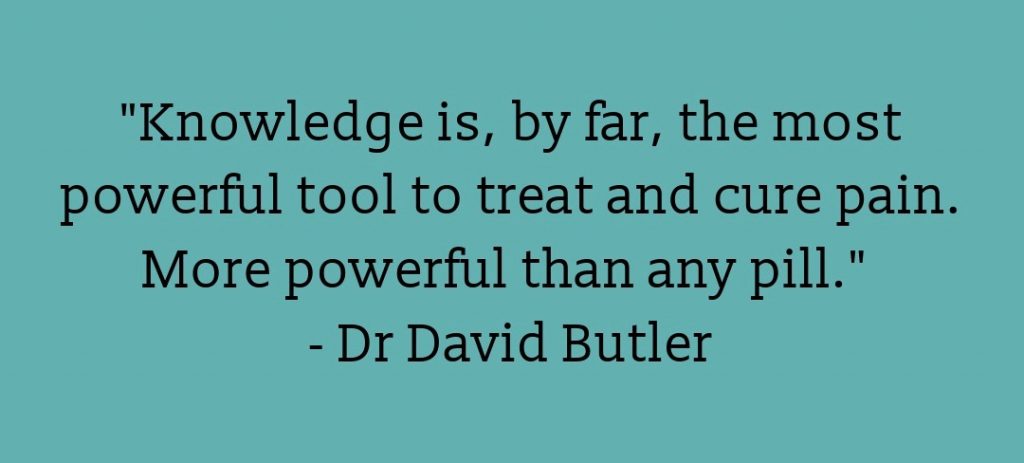
Summary
Pain is an unpleasant sensory experience ranging from mild localised discomfort to whole-body encompassing physical and emotional agony. Understanding how this complex protective system can go haywire and push people into chronic pain can help find lasting solutions and recovery. I hope this article answers some questions and helps you on that journey.
Resources
I repeatedly reach for the book Explain Pain by Prof. Lorimer Molesley and Dr David Butler. The print version is expensive and sometimes tricky to find but worth every penny; the digital copy will cost you less than a takeaway. Fortunately, both authors also have reams of information on the web, usually filmed talks and lectures, including meaningful case studies peppered with lots of Aussie humour, making listening to this complex subject more enjoyable.
Video links
Note: Each link will open in a new tab on YouTube.
Professor Lorimer Molesley, “Why things hurt?”
Dr David Butler’s “Treating Pain Using the Brain”
Here is a link to a short animation, “What is Chronic Pain?

